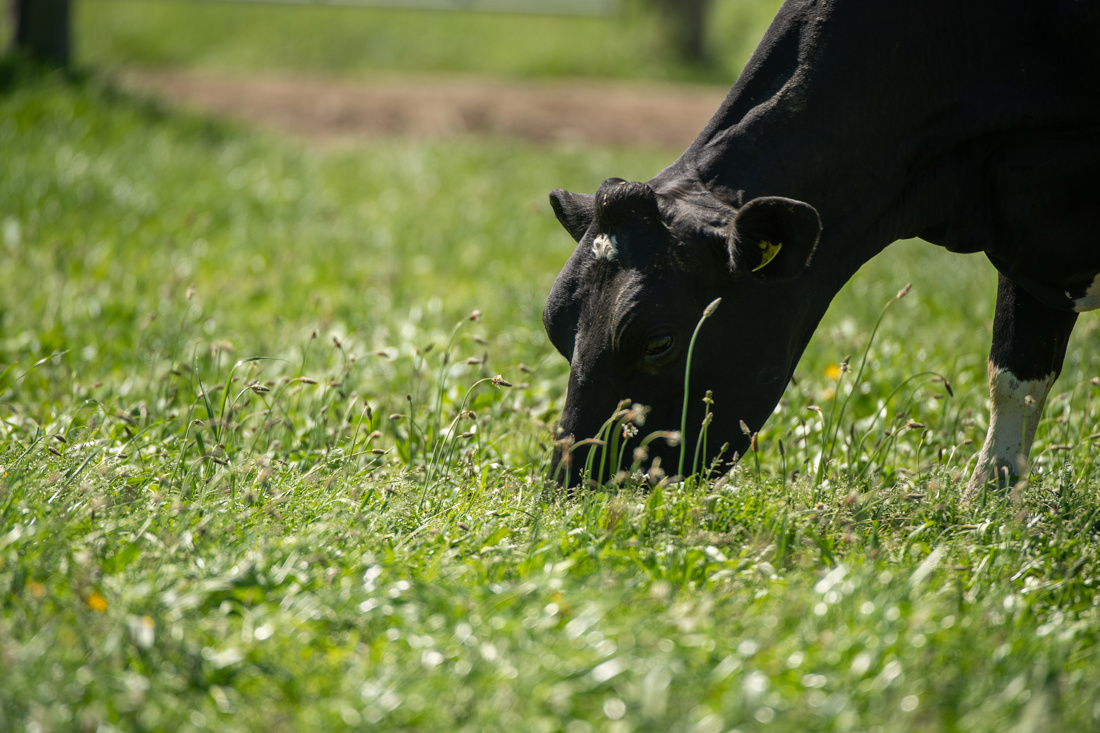Evaluating Plantain Cultivar
2 min read
The Plantain Evaluation System reviews how effective different plantain cultivars are at reducing nitrate leaching. This system helps you and regulators trust the performance of those cultivars deemed "Effective" at this task. In the past, Tonic and Agritonic plantains have been identified as effective. However, with Tonic no longer commercially available, Agritonic serves as the benchmark for assessments. The system checks for increased urine volume and decreased urinary nitrogen.
Providing farmers and regulators with confidence in the effectiveness of plantain cultivars promoted for their environmental effectiveness.
The Plantain Evaluation System assesses the effectiveness of plantain cultivars for reducing nitrate leaching. The aim is to provide farmers and regulators with confidence in the performance of cultivars classed as Effective at reducing N leaching and enable continuous improvement of cultivars used for environmental purposes.

Certified Tonic and Agritonic plantain cultivars have been shown to be effective based on an independent assessment of published data (prior to the establishment of the Evaluation System). Both cultivars show the ability to reduce N leaching, driven by reduced urinary nitrogen concentration and total nitrogen excreted per day in lactating cows.
Tonic plantain is an ageing cultivar and is no longer commercially available. Agritonic is therefore used as the benchmark cultivar in the Evaluation System.
See the two links below for details of the scientific evidence of reducing N leaching and evidence of differences between cultivars.
DairyNZ has developed a testing protocol that seed companies can use to assess the effectiveness of their cultivars for these N cycling effects.
The Evaluation System is currently set up to assess the effectiveness of cultivars for achieving:
These measures are predictors of impact on N leaching.
Cultivars are assessed against a positive (benchmark) control (Agritonic plantain) and a negative control (perennial ryegrass). Statistical analysis is used to determine whether the test cultivar is as effective as the benchmark.
The research and results of trials are reviewed by the Evaluation System Assessment Group. The group includes members from DairyNZ, Massey University, Manaaki Whenua Landcare Research, Plant & Food Research, and PGG Wrightson Seeds.
Cultivars that are not significantly lower performing than the Benchmark are classed as Effective.
The following cultivars are classed as Effective by the Evaluation System Assessment Group:
Note: Ceres Tonic and Agritonic cultivars are marketed by PGG Wrightson Seeds as a blended product, EcotainTM. Certified Ceres Tonic is no longer available outside of EcotainTM
In all cases, certified seed must be used. See our Seed Selection page for further details.
The current protocol requires measurement of plantain, ryegrass and N intake and dung/urine/milk N excretion using a metabolism stall facility. This is expensive and facilities are limited.
Research is now underway as part of the Plantain Potency and Practice programme to understand the physical traits of plantain which drive reduced urinary nitrogen, and increased soil nitrogen retention. This will enable a plant-based testing method to be developed to assess the effectiveness of cultivars, and in turn, will enable faster improvement of cultivars to achieve reduced nitrate leaching.
By 2027, the system will also account for the effectiveness of cultivars for retaining nitrogen in the soil. By 2025, the system aims to use plant measurement instead of animal trials. As we learn more about the mechanisms driving a reduction in nitrate leaching, the relative effectiveness of the various cultivars in the Evaluation System may change.
Now’s the perfect time to check in, plan, and set up for a strong season. We’ve pulled together smart tips and tools to help you stay ahead all winter long.
Whether you prefer to read, listen, or download handy guides, we’ve got you covered with trusted tools to support your journey every step of the way.
Put our proven strategies and seasonal tools to work. Boost production, support animal health and watch your profits hum.
Tools that are backed by science, shaped by farmers and made for this season.
That’s Summer Smarts.